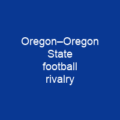The Chetco River: A Natural Wonder in Southwest Oregon
Imagine a river that weaves through the heart of southwestern Oregon, carrying with it stories of ancient times and modern challenges. The Chetco River, at 56 miles long, is more than just a waterway; it’s a lifeline for communities, a sanctuary for wildlife, and a testament to nature’s resilience.
The Chetco River: A Wild and Scenic Journey
Did you know that the upper 45 miles of this river have been designated as Wild and Scenic since 1988? This means it’s protected from development, ensuring its natural beauty remains intact for generations to come. The river’s journey is nothing short of a wild adventure, rising in the Kalmiopsis Wilderness and flowing north, west, and southwest before meeting the Pacific Ocean between Brookings and Harbor.
History and Human Impact
The Chetco River has seen it all—thousands of years of Native American habitation, followed by non-indigenous settlers who discovered gold in its banks. The town of Brookings, founded in the early 20th century, now relies on this river for drinking water. But the river’s story doesn’t end there; it supports a thriving population of salmon and trout, making it a vital ecosystem.
Water Flow and Monitoring
The US Geological Survey keeps a close eye on the Chetco River’s flow, which averages 2,263 cubic feet per second. During the 1964 Pacific Northwest flood, this number skyrocketed to an astounding 85,400 cubic feet per second! The river drains approximately 352 square miles of southern Oregon Coast, with much of it owned by the US Forest Service and Bureau of Land Management.
Geography and Climate
The watershed is characterized as mountainous, with steep river valleys. Elevations range from sea level to a staggering 5,098 feet at Pearsoll Peak. Precipitation averages between 45 and 140 inches per year, with temperatures ranging from 32°F to 82°F. The Brookings effect can cause localized hot weather during the summer months.
Wildlife and Ecosystem
The Chetco River is home to over 200 species of animals, including black bears, deer, bobcats, and salmon. Various fish species such as steelhead, chinook, coho, and coastal cutthroat trout thrive here. The region also hosts Pacific lamprey, three-spined stickleback, and sculpins.
Geological History
The Chetco River flows through ancient Klamath Mountain terrane, which is 400-100 million years old. This area was formed by plate tectonics, volcanic activity, and intense tectonic activity known as the Siskiyou orogeny. The mountainous terrain was created approximately 130 million years ago when a microcontinent collided with the North American continent.
Human History
Humans have lived in the Chetco River watershed since around 1,000 to 3,000 years ago. The first European American visitors may have been Sir Francis Drake on June 5, 1579. Later, Jedediah Smith and his company of fur traders camped on the south bank in 1828. In 1856, remaining Chetco people marched north to the Siletz Reservation.
Modern Challenges
The Chetco River has faced numerous challenges over the years. The Biscuit Fire of 2002 burned over 500,000 acres, and in 2010, it was identified as one of America’s most endangered rivers by American Rivers. Despite these challenges, efforts to protect and preserve this natural wonder continue.
Conclusion
The Chetco River is a living testament to the resilience of nature and the complex history of human interaction with the environment. From its ancient origins to modern-day conservation efforts, it remains a vital part of southwestern Oregon’s landscape. As we navigate the challenges ahead, let us remember that protecting our rivers is not just about preserving waterways; it’s about safeguarding the very essence of life itself.

You want to know more about Chetco River?
This page is based on the article Chetco River published in Wikipedia (retrieved on December 3, 2024) and was automatically summarized using artificial intelligence.







